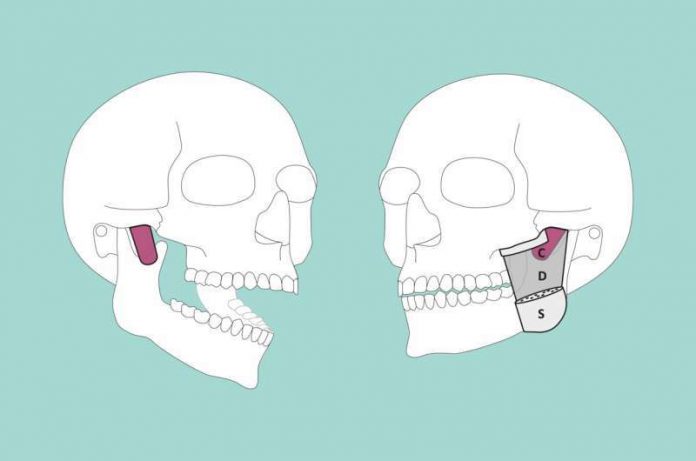
In a new study from the University of Basel, researchers have discovered a previously overlooked section of our jaw muscles and described this layer in detail for the first time.
The masseter muscle is the most prominent of the jaw muscles. If you place your fingers on the back of your cheeks and press your teeth together, you’ll feel the muscle tighten.
Anatomy textbooks generally describe the masseter as consisting of one superficial and one deep part.
In the study, the team described the structure of the masseter muscle as consisting of an additional third, even deeper layer.
They suggest that this layer be given the name Musculus masseter pars coronidea—in other words, the coronoid section of the masseter—because the newly described layer of muscle is attached to the muscular (or “coronoid”) process of the lower jaw.
The anatomical study was based on detailed examination of formalin-fixed jaw musculature, computer tomographic scans and the analysis of stained tissue sections from deceased individuals who had donated their bodies to science.
The team says this deep section of the masseter muscle is clearly distinguishable from the two other layers in terms of its course and function.
The arrangement of the muscle fibers suggests that this layer is involved in the stabilization of the lower jaw. It also appears to be the only part of the masseter that can pull the lower jaw backwards—that is, toward the ear.
A look at historical anatomy studies and textbooks reveals that the structure of the masseter muscle has already raised questions in the past.
Other individual studies from the early 2000s also reported three layers, but they divided the superficial section of the masseter into two layers and agreed with standard works in their description of the deeper section.
The team says although it’s generally assumed that anatomical research in the last 100 years has left no stone unturned, the finding is a bit like zoologists discovering a new species of vertebrate.
If you care about health, please read studies about heartburn drug that may help treat COVID-19, and findings of when should older adults stop driving.
For more information about health, please see recent studies about cause of severe inflammation in COVID-19, and results showing that this exercise can reduce frailty in older people.
The study is published in the journal Annals of Anatomy. One author of the study is Dr. Szilvia Mezey.
Copyright © 2021 Knowridge Science Report. All rights reserved.



